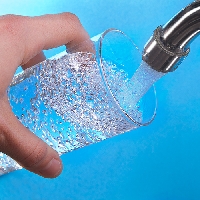How clean is your water?
By Catalogs Editorial Staff

You need to find out how clean is your water for the health of your family
You probably don?t know how clean is your water — but you should.
In the worst case scenario, water supplies can become contaminated and people end up drinking a product tainted with feces, particularly when sewer and overflow systems are inundated by flooding.
Pollutants must be kept out of drinking sources because the ?cocktail? of chemicals used by industry is not intended to be in anything consumed by humans. Drinking tainted resources has horrible ramifications. People get sick.
TEST YOUR WATER
Research governmental reports and quality statistics for your provider. Have your sources tested. It requires testing when it is hard, when there are lead pipes in a home or when it passes through brass fixtures.
When a pregnant woman or small children lives in a home, water should be tested to prevent sickness. If family members are regularly experiencing gastrointestinal problems what comes from the tap may be the culprit.
Before purchasing a water filter system determine the precise problem in the supply. Local authorities will test for you. If impurities are discovered, install the right type of filter, which removes the bad stuff.
WATER FILTERS
Filters consist of charcoal or activated-charcoal, which contains carbon. Charcoal absorbs the bad stuff.
~
When heating or a chemical process is combined with the charcoal in the filter the charcoal becomes even more effective. The heat activates the porous charcoal, which sucks up the impurities in the H2O.
Charcoal filters eliminate dissolved minerals, bacteria and nitrate but they do not eliminate lead, copper or other metals. Depending on the kind of H2O filter you install, it may remove solvents, pesticides and chlorination by-products.
Impurities cause smells and tastes bad because of the organic contaminants in it. Carbon removes contaminants.
Well water filters, drinking water filter systems and whole house water filters are available. Whatever the specific need there is a filter to fix it.
REVERSE OSMOSIS
Different H2O filters work differently. Some use reverse osmosis. The incoming liquid is pushed through a semi-permeable membrane. What comes out of the tap is separated into pure permeate and sent to a tank for future use. The salt (brine) concentrate goes down the drain.
The product sits in a pressure tank and undergoes activate charcoal treatment and polishing filtration, removing the nasty smell and taste.
Reverse osmosis diminishes the amount of petrol chemicals, pesticides, dioxins and chloroform. Nitrates, sodium and dissolved organ and inorganic compounds are removed by reverse osmosis although not by 100 percent.
ION EXCHANGE
An ion exchange filter removes dissolved salts and calcium resulting in soft water.
When using an ion exchange filter along with carbon, mineral irons naturally found are switched with other ions. Scale build-up is neutralized and the negative effects are eliminated. The filter removes minerals including calcium and magnesium, as well as fluorides. Certain models remove radium and barium.
DISTILLATION
An additional type of filter relies on distillation, which occurs when water is boiled and creates steam. After steam cools, it compacts and results in mineral-free droplets. The droplets are stored in a container. Carbon is added to the droplets, which creates almost contaminant free H2O.
Popular Savings Offers
This filter does not remove specific solvents, organ contaminants and pesticides and does not stop bacteria from re-forming on the cooling coils when the filter is inactive. Contaminants, including bacteria, heavy metals, nitrates, sodium radionuclides and dissolved solids are removed.











